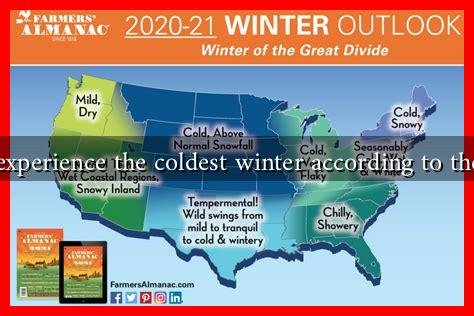-
Table of Contents
What Regions Will Experience the Coldest Winter According to the Farmers’ Almanac
As winter approaches, many people turn to the Farmers’ Almanac for predictions on what the season will bring. Known for its long-range weather forecasts, the Farmers’ Almanac has been a trusted source for over 200 years. In this article, we will explore which regions are expected to experience the coldest winter this year, based on the latest predictions from the Almanac.
Understanding the Farmers’ Almanac Predictions
The Farmers’ Almanac uses a unique formula that combines solar cycles, weather patterns, and historical data to make its forecasts. Unlike the National Weather Service, which relies on computer models and meteorological data, the Almanac’s predictions are based on a blend of science and folklore. This approach has garnered a loyal following, with many people swearing by its accuracy.
Regions Anticipated to Experience Extreme Cold
According to the Farmers’ Almanac’s forecast for the upcoming winter, several regions in the United States are expected to face particularly frigid temperatures.
. Here are the key areas to watch:
- The Northeast: States like New York, Pennsylvania, and New England are predicted to experience a harsh winter, with colder-than-average temperatures and significant snowfall.
- The Midwest: Areas such as Minnesota, Wisconsin, and Michigan are also expected to see extreme cold, with the potential for severe winter storms.
- The Northern Plains: States like North Dakota and South Dakota are likely to face bitterly cold temperatures, especially in January and February.
- The Rockies: Regions in Colorado and Wyoming may experience heavy snowfall and cold snaps, particularly in the higher elevations.
Factors Contributing to Cold Weather Predictions
Several factors contribute to the Farmers’ Almanac’s predictions of a colder winter:
- La Niña Phenomenon: The ongoing La Niña conditions in the Pacific Ocean can influence weather patterns across North America, often leading to colder winters in the northern states.
- Polar Vortex: A weakened polar vortex can allow frigid Arctic air to plunge southward, resulting in extreme cold spells in the Midwest and Northeast.
- Historical Trends: The Almanac analyzes historical weather data to identify patterns that may repeat, helping to predict future conditions.
Case Studies: Past Cold Winters
To understand the potential impact of this winter’s predictions, it’s helpful to look at past cold winters:
- Winter of 2013-2014: This winter was marked by the “Polar Vortex,” which brought record-breaking cold temperatures to much of the Midwest and Northeast. Cities like Chicago experienced temperatures as low as -16°F.
- Winter of 1978-1979: Known for its severe cold and heavy snowfall, this winter saw blizzards that paralyzed the Midwest and Northeast, with some areas receiving over 100 inches of snow.
Preparing for the Cold
As the cold weather approaches, it’s essential for residents in the affected regions to prepare adequately. Here are some tips:
- Winterize Your Home: Insulate pipes, check heating systems, and seal drafts to keep your home warm and energy-efficient.
- Stock Up on Supplies: Ensure you have enough food, water, and essential supplies in case of severe weather that could lead to power outages.
- Stay Informed: Keep an eye on local weather forecasts and alerts to stay updated on changing conditions.
Conclusion
This winter, the Farmers’ Almanac predicts that several regions, particularly in the Northeast, Midwest, and Northern Plains, will experience some of the coldest temperatures in years. Understanding the factors that contribute to these predictions can help residents prepare for the challenges that winter may bring. By taking proactive steps to winterize homes and stay informed, individuals can better navigate the harsh conditions ahead. For more detailed forecasts and tips, you can visit the official Farmers’ Almanac website.





